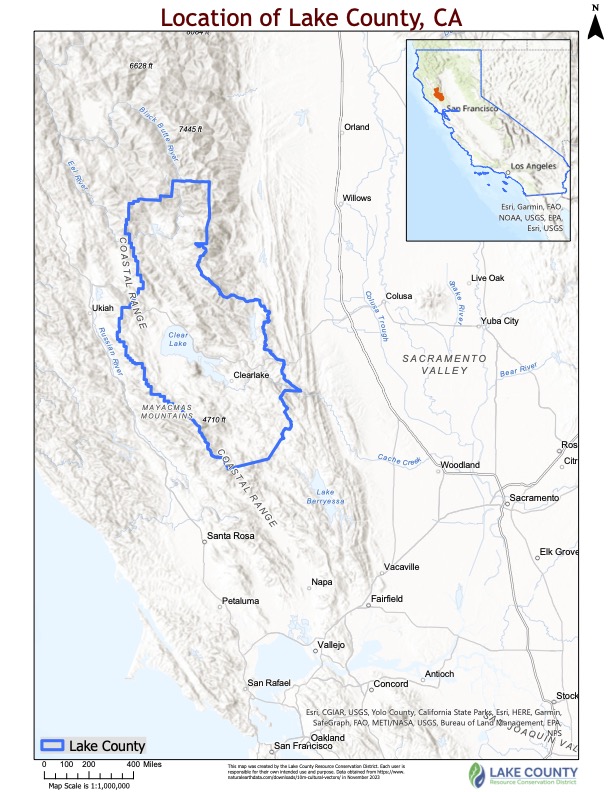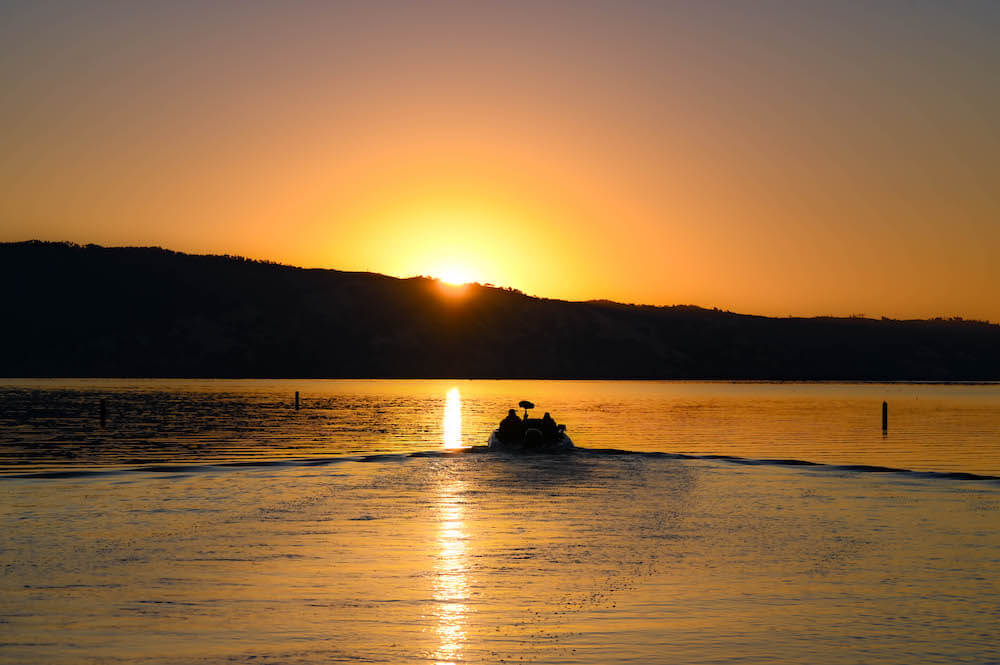ABOUT US
Dedicated to the locally-led long term sustainable conservation and stewardship of natural resources and agriculture in Lake County, California.
A Bit of History

The federal government established the Soil Conservation Service in 1937, in response to the national Dust Bowl crisis of the 1930s. Soil Conservation Districts on a local level began forming in the late 1930s and quickly spread throughout the 48 states, where they began to perform the functions originally envisioned by the formation of the Soil Conservation Service. In California, Soil Conservation Districts were originally empowered to manage soil and water resources for conservation, but these powers were expanded in the early 1970s to include “related resources,” including fish and wildlife habitat. This expansion of powers was reflected in the change of name from “Soil” Conservation Districts to “Resource” Conservation Districts in 1971.

Our Location

What is an RCD?
Resource Conservation Districts are government special districts typically established at the county level, although they can also exist at a state or regional level. The primary mission of an RCD is to promote and facilitate the conservation and sustainable use of natural resources within a geographic sphere of influence. Resource Conservation Districts play a crucial role in local natural resources management of and environmental stewardship. Some of the functions and activities an RCD can facilitate include:

1. Forest Conservation
Most RCDs have long-established relationships with the Natural Resources Conservation Service, a partner agency to the U.S. Forest Service. Through the Environmental Quality Incentive Program, RCDs provide technical assistance to private landowners and NRCS provides the financial assistance to improve forest health on their property.
2. Watershed Management:
RCDs can be involved in the restoration and protection of watersheds, which involves managing the vegetation and land within a watershed to maintain water quality and quantity.
3. Wildlife Habitat Conservation:
RCDs can be involved in projects focused on the protection and enhancement of wildlife habitat, such as creating wildlife corridors and planting of native vegetation.
4. Soil and Water Conservation:
RCDs can work to prevent erosion, improve soil quality, and manage water resources. This can include projects such as the construction of erosion control structures, and water quality mitigation projects.
RCDs can be involved in projects focused on the protection and enhancement of wildlife habitat, such as creating wildlife corridors and planting of native vegetation.
5. Agricultural Conservation:
RCDs work with farmers and ranchers of all backgrounds to promote sustainable agriculture practices that reduce environmental impacts while maintaining productivity.
6. Education and Outreach:
RCDs engage in education and outreach programs to raise awareness about natural resources concerns and to provide resources for the community.
7. Grant Management:
RCDs apply for, administer and execute grants which often include partners from Tribal, government and non-profit agencies.
8. Collaboration:
RCDs collaborate with other governmental agencies, nonprofits, and community organizations, such as Fire Safe Councils, to address countywide environmental issues.
The specific roles and activities of individual RCDs can vary from one to another, depending on the specific environmental challenges and priorities of their respective region. Overall, RCDs serve as valuable resources for promoting the locally-led long term sustainable conservation and stewardship of natural and agriculture resources within their sphere of influence.
The Lake County RCD was formed by the consolidation of both the West Lake and East Lake RCDs on July 1, 2016. The founding directors were appointed by the Lake County Board of Supervisors on June 28, 2016 and officers elected at an organizational meeting on July 15, 2016. Currently, meetings are held at 9:00 am on the second Tuesday of every month on Zoom. A link is provided on the agendas posted at the Agricultural Center. Meetings are open to the public.
How are RCDs organized?
At one time, RCD directors were usually elected, but most are now appointed by county boards of supervisors. Nonetheless, RCD boards are not county government entities, although they are subject to state law concerning elections, responsibilities, legal meetings, transparency and accountability. Boards meet publicly once a month to discuss local conservation issues, and make decisions or take actions. RCDs usually have little or no tax base and rely heavily on grants and other types of fundraising to stay in operation.
Board members , who always serve without pay, are appointed or elected on their strengths as active partners in the conservation community, and are almost always landowners within a district with interest in conserving resources on their own lands. Boards also frequently employ specialists and contractors to carry out board policies and projects, which may address a broad array of conservation issues.
What is the relationship between the RCD and NRCS?
RCDs were created to be the local implementing arm of the US Department of Agriculture’s Natural Resources Conservation Service (NRCS). By law, an RCD must invite the NRCS into a county, with NRCS appointing a local district conservationist to provide technical assistance to districts, as well as acting as a liaison between the district and federal programs. Local offices of the NRCS also frequently employ other specialists, such as soil conservationists and engineers, to provide technical assistance to the district. As with other Resource Conservation Districts, Lake County Resource Conservation District works closely with NRCS staff.
